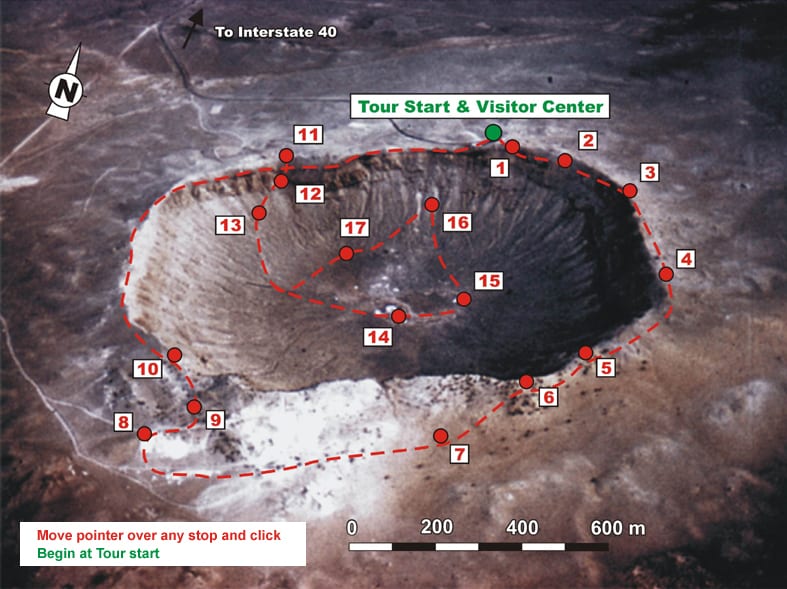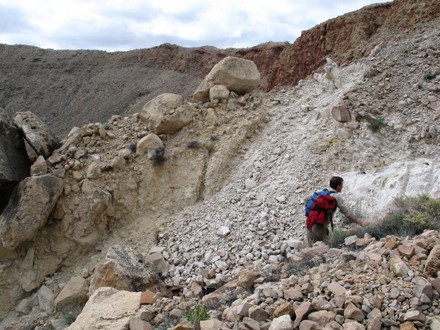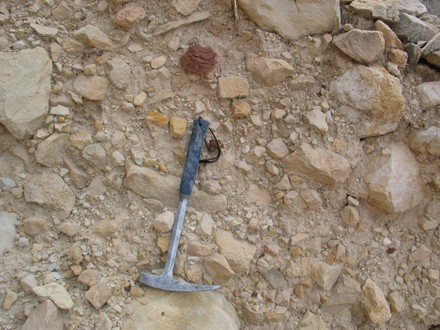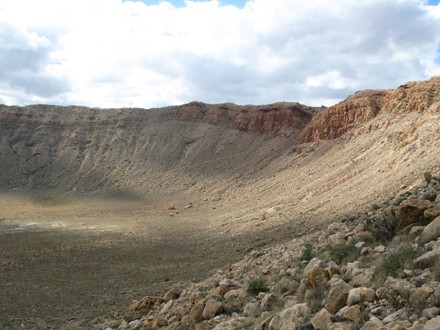
Explorer’s Guide to Impact Craters
Barringer Crater Tour
- Getting to Barringer Crater
- Virtual Tour of Barringer Crater
- Barringer Tour: Visitor Center
- Barringer – Stop 1
- Barringer – Stop 2
- Barringer – Stop 3
- Barringer – Stop 4
- Barringer – Stop 5
- Barringer – Stop 6
- Barringer – Stop 7
- Barringer – Stop 8
- Barringer – Stop 9
- Barringer – Stop 10
- Barringer – Stop 11
- Barringer – Stop 12
- Barringer – Stop 13
- Barringer – Stop 14
- Barringer – Stop 15
- Barringer – Stop 16
- Barringer – Stop 17
Stop 16 at Barringer
Impact breccias are relatively rare at Barringer Crater. We know from the shafts drilled in the crater center that impact breccias probably underlie much of the interior of the crater. At this stop, we’ll examine some impact breccias that were transported outwards from the center and deposited on the crater walls.
View of the impact breccias along the crater wall from the crater floor

Impact breccias with overlying talus deposits
Photo: G. Osinski, University of Western Ontario
Location: Approximately halfway up the northern crater wall
Scale: Height of the person is approximately 1.5 meters
A scientist examines the contact (at head height) of the impact breccias (bright material) with overlying talus deposits. The latter are more recent and continue to be formed at the present day as the crater walls are being eroded.

Steep crater walls!
Photo: G. Osinski, University of Western Ontario
Location: Approximately halfway up the northern crater wall
Scale: Width of the larger boulders in the foreground is several meters
This perspective of the crater certainly makes one appreciate the steepness of the crater walls. This view looks down a channel formed by present-day erosion of the crater walls.

Closeup view of impact breccias
Photo: G. Osinski, University of Western Ontario
Location: Approximately halfway up the northern crater wall
Scale: Length of rock hammer is approximately 0.5 meter
If we take a closer look, we can see that a variety of rocks have been mixed together to form a new rock: impact breccias. Notice the brick red fragments of Moenkopi Formation– there’s a large one just above the rock hammer. These breccias represent material that was excavated, mixed together, and transported outwards from the center of the crater as it was being formed.

View looking to the western portion of Barringer Crater
Photo: G. Osinski, University of Western Ontario
Location: Approximately halfway up the northern crater wall
Scale: Height from the floor to the crater rim is approximately 180 meters
